

































Bodybuilding DVD's
Ronnie Coleman
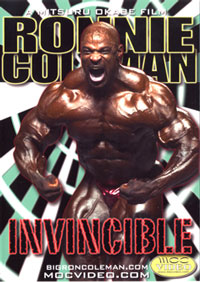
Colossal Workout
Dennis Wolf
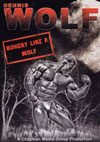
Dorian Yates
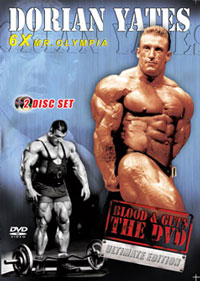
Believe to Achieve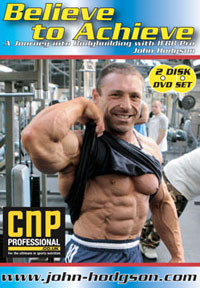
Jay Cutler's house

Hard and Heavy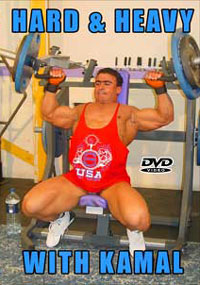
|
Hypogonadotropic Hypogonadism
:
Pulsatile secretion of Gonadotropin releasing hormone (GnRH) from the
hypothalamus is required for both the initiation and maintenance of the
reproductive axis in the human. Pulsatile GnRH stimulates the biosynthesis of
luteinizing hormone (LH) and follicle stimulating hormone (FSH) that in turn
initiates endogenous testosterone production and spermatogenesis as well as
systemic testosterone secretion and virilization. Failure of this episodic GnRH
secretion or disruption of Gonadotropin secretion results in the clinical
syndrome of hypogonadotropic hypogonadism (HH).
The usage of anabolic androgenic Steroids (AAS) may result in a functional form
of HH known as Secondary Acquired Hypogonadotropic Hypogonadism and is diagnosed
in the setting of a low testosterone level and sperm count in association with
low or inappropriately normal serum LH and FSH concentrations.
In order to avoid any unnecessary confusion, it is important to understand what
the actions of Gonadatropin therapy and Selective estrogen Receptor Modulators
are as well as how they differ from each other and more specifically, during
post cycle recovery (PCT).
Gonadotropintherapy:
There is nothing more effective than Human Chorionic Gonadotropin (HCG). The
action of HCG is identical to that of pituitary LH. This takes place
independently and is not affected by exogenous hormones and/or preexisting HPTA
suppression. Therefore, it directly stimulates a dramatic increase in endogenous
testosterone production, spermatogenesis and testicular volume. The primary goal
during the first few weeks of PCT is to quickly restore testicular volume and
function. Also, the dramatic increase in testosterone production is necessary to
avoid and/or minimize the unfavorable "crash" effect. In the majority of
individuals with larger testes at baseline, HCG alone is sufficient in restoring
endogenous testosterone production as well at the induction of spermatogenesis
which is most likely a result of residual FSH secretion. Once there is a plateau
in the response to HCG, treatment with an FSH preparation such as human
menopausal Gonadotropin (HMG) or recombinant follicle stimulating hormone (rFSH)
should be added in combination to HCG.
*The addition of an FSH preparation is rarely required and is best suited for
severe cases of HH. FSH preparations are not readily available to most
individuals. Therefore, there is no need to go into details with respect to its
application at this time.
HCG is administered by subcutaneous (SC) or intramuscular (IM) injection. The
average (3ml 22-25G x ?-1??????) syringe is adequate for IM injections but insulin
syringes (???-1ml 28-30G x ???-1???) are recommended for SC injections. In regards to
effectiveness, there should be no discernable difference between either of the
techniques. The individual should opt for the most comfortable and/or convenient
form of administration.
The following is a description of the available preparations by Serono:
HCG ampoules are supplied in 500, 1,000, 2,000, 5,000 and 10,000 IU preparations
accompanied by 1 ml of sterile diluent. It should be stored at a controlled
room temperature (15-30 degrees C or 59-86 degrees F) and should be used
immediately after reconstitution.
HCG multidose vials are supplied in 2,000, 5,000 and 10,000 IU preparations
accompanied by 10 ml of bacteriostatic water. It should be stored at a
controlled room temperature (15-30 degrees C or 59-86 degrees F), refrigerated
(2-8 degrees C or 36-46 degrees F) after reconstitution and used within 30 days.
Other manufacturers are available and preparations may vary.
The terms international units (IUs) can occasionally cause confusion when
reconstituting and measuring HCG. The actual process is quite elementary and the
concentration per ml (cc) is dependant on the concentration of the lyophilized
powder and the volume of diluent used for reconstitution. For example, if you
dilute 5,000 IUs HCG with 5ml (cc) solvent, the end result is 1,000 IUs per ml
(cc). Divide the same 5,000 IUs with 10 ml (cc) and the end result is 500 IUs
per ml (cc).
*Bacteriostatic water should always be utilized during reconstitution when long
term (30 day) storage and multi dose administration are required.
Selective estrogen Receptor Modulators:
Selective estrogen Receptor Modulators (SERMs) such as Clomiphene (clomid) and
Tamoxifen (Nolvadex) increase pituitary LH secretion in secondary manner by
blocking estrogen negative feedback on the HPTA. On average, this is not strong
enough by itself to counteract the severe imbalance of the androgen: estrogen
ratio that is encountered post cycle, especially in the presence of testicular
atrophy. Therefore, SERMs are used during PCT primarily as an anti estrogen and
to continue the stimulation of pituitary LH after HCG has been discontinued.
Nolvadex is widely available in 10 mg or 20 mg tablet preparations and clomid is
available in 50 mg tablet preparations.
Before Beginning PCT:
It is highly recommended to establish baseline blood values before beginning a
cycle. The same principle applies to establishing post cycle blood values, which
are necessary for evaluating recovery. Post cycle blood work should be obtained
approximately 4 weeks after the cessation of PCT in order to determine accurate
readings. Additional blood work should be performed when applicable and/or
required.
The following are Fasting blood values:
Hormone
1. Cortisol, Total
2. Estradiol, Extraction
3. Prolactin
4. LH
5. FSH
6. T3, Free
7. T4, Free
8. TSH
9. testosterone , Total, Free and Weakly Bound
10. Hemoglobin A1C
11. Fasting Insulin
12. Somatomedian C (optional)
Cardiovascular
13. CBC
14. Comprehensive Metabolic Panel
15. Lipid Panel
Other
16. GGT Important Liver Value not included in Comp Metabolic Panel
When to begin PCT:
On average, begin PCT approximately 5-10 days after your last injection
regardless of longer acting esters. Begin PCT 1-3 days after your last injection
and/or intake when using short acting esters.
Keep in mind, pituitary LH secretion automatically increases as the hormones
diminish from your system. The elevated androgen levels are from an exogenous
source and your endogenous production is suppressed. Therefore, waiting for the
exogenous androgens to completely clear from your system, ultimately results in
lower total concentrations of androgens in your system when beginning PCT. This
leads to an unfavorable androgen/estrogen ratio and the well known ???crash???
effect.
*As previously mentioned, the actions of HCG take place independently and is not
affected by exogenous hormones and/or preexisting HPTA suppression. There are no
contradictions with respect to the effectiveness of HCG usage while exogenous
hormones are present in your system.
PCT protocol's):
1.) 1,000 IUs HCG 3x/wk (mon/wed/fri) in combination with 20 mgs Nolvadex ED for
the first 3 weeks. After, discontinue HCG and continue with 20 mgs Nolvadex ED
for an additional 3 weeks.
2.) 1,000 IUs HCG 3x/wk (mon/wed/fri) in combination with 20 mgs Nolvadex ED and
50 mgs clomid ED for the first 3 weeks. After, discontinue HCG and continue with
20 mgs Nolvadex ED and 50 mgs clomid ED for an additional 3 weeks.
3.) 1,500 IUs HCG 3x/wk (mon/wed/fri) in combination with 20 mgs Nolvadex ED for
the first 3 weeks. After, discontinue HCG and continue 20 mgs Nolvadex ED for an
additional 3 weeks.
4.) 1,500 IUs HCG 3x/wk (mon/wed/fri) in combination with 100 mgs clomid ED and
20 mgs Nolvadex ED for the first 3 weeks. After, discontinue HCG and continue
with 50 mgs clomid ED and 20 mgs Nolvadex ED for an additional 3 weeks.
Option one can be considered as a standard PCT protocol. This should apply to
all basic cycles. Option 2 is generally the same as option one except for the
addition of clomid which is added as a supporting recovery aid. Option three and
four incorporate a higher HCG dosage and have a relationship similar to options
one and two in the sense that clomid is incorporated in the latter as a
supporting recovery aid.
*The majority of my experience is with intermediate to advanced athletes whom
have completed multiple cycles with higher dosages. Therefore, based upon
previous blood work results and considering the common or convenient
preparations available, we have established that 1,500 IUs 3x/wk (mon/wed/fri)
to be the optimal HCG dosage to begin with. The Nolvadex dosage remains
unchanged however clomid is utilized throughout the entire PCT at 100 mgs ED
during the first 3 weeks and 50 mgs ED for the last 3 weeks.
HCG During cycle:
HCG in combination with Nolvadex can and should be used during prolonged
(12+/wks) and high dosage (1,000+mgs/wk) cycles. In this case, 500-1,000 IUs HCG
ED in combination with 20 mgs Nolvadex ED for 7-10 days consecutively is
administered mid cycle or intermittently (every 6-8 weeks) during the cycle.
Maintaining testicular volume during cycle does in fact improve recovery when
compared to atrophied testes when beginning PCT. This solution addresses both
testicular atrophy and prevention of Leydig cell desensitization (discussed
next) associated with HCG usage.
Leydig Cell Desensitization:
Leydig cell desensitization does in fact occur to some degree with prolonged or
high dose HCG usage. Using it continuously during a cycle could possibly cause
the LH receptor to desensitize which in turn would ultimately render the PCT to
be either less effective or possibly useless. This seems counterproductive. HCG
will not be needed on cycles where the proper ancillaries are used and where the
dosages/durations are realistic.
The previous summary was a general statement. The reality and good news is that
Leydig cell desensitization due to HCG usage is blocked and/or minimized by
Nolvadex. This occurs by suppressing HCG's ability to inhibit the conversion of
17 alpha hydroxyprogesterone to testosterone .
Additional Factors That Influence Recovery:
Factors that may complicate and/or delay recovery are elevated levels of
estrogen and prolactin. Both of these hormones, when elevated, exert negative
feedback on the HPTA. estrogen and its side effects can be controlled by using
an Aromatase Inhibitor such as Aromasin, Femara and Arimidex during cycles
including aromatizing AAS. Prolactin and its side effects can be controlled by
using an anti Prolactin such as Cabergoline (Dostinex) or Bromocriptine (Parodel)
during cycles containing nandrolones. If these measures have not been addressed
during the cycle, they will more than likely need to be addressed during PCT. In
this scenario, the objective is to lower these hormones to acceptable levels in
order to avoid the complications and/or delay in recovery. Blood work is
imperative in evaluating the effectiveness oftherapy. This will provide a clear
and concise answer in regards to the adjustment of dosages and continuation of
medication if necessary.
*There are numerous studies which support and refute the association of
nandrolones and prolactin. However, based on first hand experience and blood
work results, there are far more individuals today whom can testify that the
usage of nandrolones can attribute to an increase in prolactin concentrations.
In addition, many individuals have reported elevated prolactin levels during
cycles which do not contain nandrolones. The common factor within these cases is
supraphysiological levels of estrogen. estrogens act directly at the pituitary
level by causing the stimulation of lactotrophs which in turn enhances prolactin
secretion. This is another reason why estrogen management in the form of an
Aromatase Inhibitor should be included with cycles containing aromatizing AAS.
Although not absolutely necessary and considering the necessary restoration of
physiological estrogen values, there is sufficient evidence which suggests that
Aromatase Inhibitors can improve and increase recovery rates.
Unsuccessful PCT:
In some cases the aforementioned post cycle therapy protocols as well as those
which are not mentioned may be unsuccessful in the restoration of homeostasis.
This should not warrant immediate concern. Many endocrinologists have concluded
that the only form of treatment in this particular scenario is hormone
replacement therapy (HRT).
This is far from the truth. The reason many endocrinologists have come to this
conclusion is due to the fact that very few of them have the experience treating
severe forms of secondary acquired hypogonadotropic hypogonadism. They are
unfamiliar with proper protocols which include high dosage HCG administration
and additional Gonadotropin preparations such as HMG or rFSH. This complication
puts the patient at risk for potential and unknown side effects in the eyes of
the doctor. Therefore, HRT is a reasonable solution since it will quickly
alleviate the majority of the uncomfortable symptoms that the patient is
experiencing.
Aside from disappointing blood work results which illustrate the typical signs
of an unsuccessful recovery, the key physical indicator that the treatment is
unsuccessful is testicular atrophy. In this case, HCG is continued with the
necessary adjustments in dosage and frequency until an increase in testicular
volume has been achieved. There is no one size fits all protocol since every
case varies and deserves an individualized approach. Subsequent changes will be
based upon the individual???s response to each particular stage. All the variable
factors involved during the recovery process need to be considered. It's far
from accurate to reach the conclusion that HRT is needed if one specific
recovery protocol is not successful.
Ongoing Argument(s):
Hypothetically speaking, if testicular function and volume have been maintained
during cycle with HCG, SERMs are then utilized to counteract the imbalance in
the androgen: estrogen ratio encountered post cycle as the exogenous androgens
diminish. This results in the prevention of estrogenic side effects while
increasing pituitary LH secretion which in turn increases testosterone
production.
There is nothing wrong with using a commonly referred to protocol which
recommends 250-500 IUs HCG 1-2x/wk to be incorporated throughout the cycle.
However, a significant cause for concern in regards to this protocol relates to
the cessation of HCG once the cycle has completed and from that point on, the
only substances used during PCT are SERMs which consist of Nolvadex and/or
clomid. Realistically, there is absolutely no guarantee that this formula
prevents testicular atrophy to the extent where the overall volume and function
of the testes are in an optimal state. Unfortunately, a large majority of
individuals do not realize or are not aware that Leydig cell desensitization
does in fact occur with prolonged or high dosage HCG usage. Therefore, users
which follow this protocol whom do not incorporate Nolvadex or an aromatase
inhibitor are now susceptible to Leydig cell desensitization which may render
HCG usage post cycle ineffective when and if needed.
During conservative cycles, there is substantial evidence which exists that
supports the effectiveness of the HCG during cycle and SERMs only post cycle
protocol, especially when proper estrogen and prolactin management has been
incorporated. However, this conclusion is much more difficult to achieve on
heavy or prolonged cycles. Testicular volume should be maintained to an
acceptable extent but that does not necessarily result in an improved recovery
as severe HTPA suppression still exists which is not immediately repairable
through the usage of SERMs.
The most common argument here when incorporating HCG during PCT is that HCG
itself is suppressive. This is true and one particular way this occurs is though
the constant binding of HCG which disrupts the endogenous pulsatile secretion of
LH. A recent study which included the usage of 250 mcgs Ovidrel (rHCG) 2x/wk for
12 weeks demonstrated that the patients resumed normal HPTA function within four
weeks upon cessation, without the usage of SERMs. What???s even more interesting
is that 250 mcgs rHCG is the equivalent of approximately 5,000 IUs uHCG.
Therefore, putting things into perspective, a few additional weeks of
suppression is nothing to be overly concerned about compared to and considering
the 12 weeks of suppression incurred during the average cycle. The usage of HCG
during PCT is a minimally intrusive variable where the benefits clearly exceed
the associated costs.
Conclusion:
PCT should begin after the last injection and/or AAS intake. More specifically,
a relative guideline to begin PCT is within 5-10 days when using long acting
esters or 1-3 days when using short acting esters. This PCT protocol should
consist of 1,000-1,500 IUs HCG 3x/wk (mod/wed/fri) in combination with 20 mgs
Nolvadex ED and, if necessary, 50-100 mgs clomid ED. The mid/intermittent cycle
protocol of 500-1,000 IUs HCG and 20 mgs Nolvadex ED for 7 days consecutively
can and should be utilized when necessary during prolonged (12+/wks) or heavy
dosage (1,000+mgs/wk) cycles. In addition, blood work should be performed before
beginning a cycle and after completing a cycle in order to establish baseline
values and evaluate recovery, respectively.
If recovery is unsuccessful, HCG is continued with an adjustment in dosage and
frequency as necessary until the increase in testicular volume and function have
been achieved which is unlike the more typical, yet incorrect belief that HCG is
only to be used for a short period of time. Once there is a plateau in the
response to HCG, treatment with an FSH preparation such as human menopausal
Gonadotropin (HMG) or recombinant follicle stimulating hormone (rFSH) should be
added at a starting dose of 75-150 IUs on alternate days. This continual usage
is not necessary and avoidable in most cases by utilizing the mid/intermittent
protocol previously mentioned, but it is much more common and less avoidable
with long term (1+/yr) users, whom have not taken the suggested preventive
measures, and/or improper recovery from previous cycles regardless of which
protocol is chosen.
With the usage of HCG post cycle, your androgens are elevated but well below
that of supraphysiological concentrations from exogenous hormones. In addition,
a noteworthy difference is that the effect is through a direct stimulation of
testicular production compared to the secondary nature of SERMs in conjunction
in the presence of testis that are not guaranteed to be in an optimal
functioning state. Upon completion, blood work will display significantly higher
levels of LH, FSH and testosterone in this environment which includes HCG and
SERMs during PCT versus HCG during cycle and SERMs only during PCT. This
ultimately results in a more comfortable as well as tolerable recovery both
physically and psychologically. In conclusion, HCG should always be included
during PCT in combination with SERMs regardless of what protocol has been
utilized during cycle to prevent testicular atrophy, in order to achieve an
optimal recovery.
If you use an article from this site, Please provide a link to the home page if possible.. Thank you kindly
Come join us at the hottest Bodybuilding and fitness board around
Free to join!!!!
World class bodybuilding

|
|




